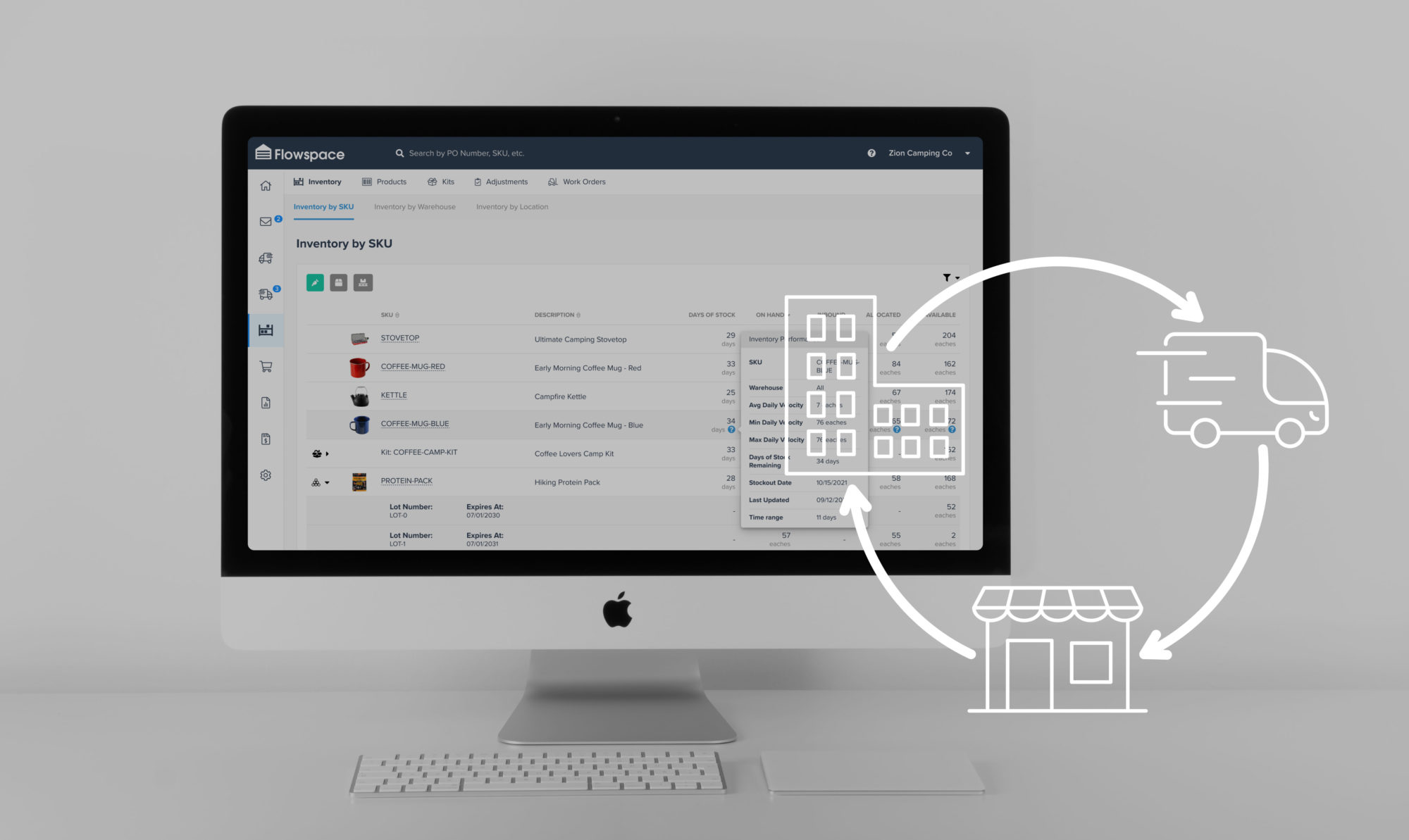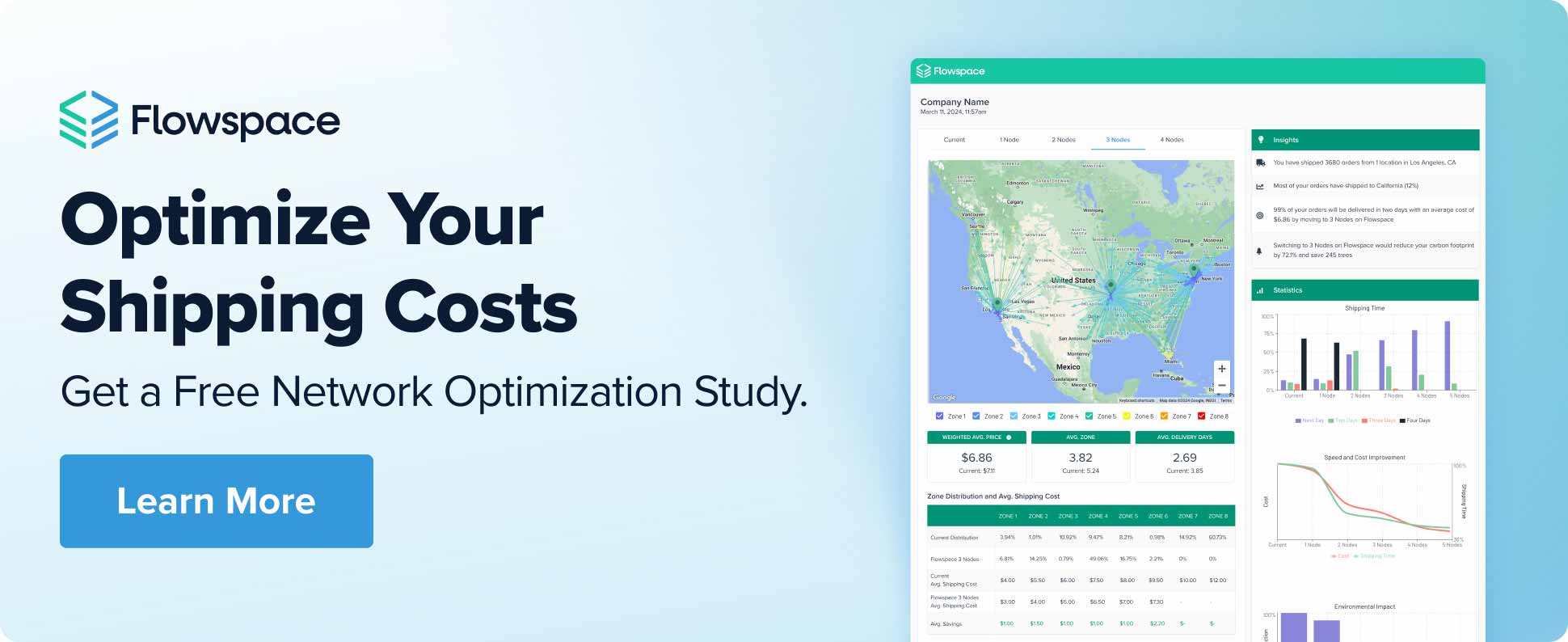
Updated March 17, 2024
Demand forecasting is an essential component of any supply chain management strategy because, without it, you’d have no way to estimate how to purchase material to meet customer demand and foresee future demand . In this guide to demand forecasting, you’ll learn how to forecast demand and the best practices for demand planning in the supply chain.
What is Demand Forecasting in the Supply Chain?
Demand forecasting in supply chain management refers to the process of demand planning , or predicting the demand of materials to ensure you can deliver the right products and in the right quantities to satisfy customer demand without creating a surplus. Forecast error can result in creating a surplus, which is both wasteful and costly.
Why is Forecasting Demand Important in the Supply Chain?
Accurate demand forecasting is important to the supply chain because it is the process by which strategic and operational strategies are devised. Think of it as the underlying hypothesis for strategic business activities and the starting point for most supply chain processes, like raw material planning, purchasing, inbound logistics, cash flow, and manufacturing.
Aligning Supply with Demand
At its core, demand forecasting in ecommerce helps align supply with customer demand, ensuring that businesses stock the right products at the right time. This alignment is crucial for maintaining customer satisfaction, avoiding stock outs and overstocking, and curbing excess inventory and dead stock that ties up capital and storage space.
Strategic Planning and Resource Allocation
Accurate demand forecasting enables ecommerce businesses to plan their marketing campaigns, allocate resources efficiently, and set realistic sales targets. It also aids in financial planning, helping businesses budget for growth, manage cash flow, and invest wisely in product development and market expansion.
How Does Demand Forecasting Work
We’ve thrown a lot of information at you very quickly but sales forecasting is little more than the use of sales data from the past to determine consumer demand in the future. The process can be broken down into qualitative and quantitative forecasting, both of which rely on different resources and data sets to extrapolate useful sales data.
The quantitative forecasting method, also known as passive demand forecasting, is used when there is existing historical data on specific products and a pre-established demand. Passive demand forecasting requires the use of mathematical formulations and data sets like financial reports, sales, revenue figures, and website analytics.
The qualitative method, or active demand forecasting , on the other hand, relies on emerging technologies (such as machine learning ) , pricing and availability changes, product lifecycle, product upgrades and, most importantly, the intuition and experience of those planning the forecast.
The 7 Types of Demand Forecasting
Each type of demand forecasting offers unique insights and is suited to different business needs and market conditions. Here’s a breakdown of the seven key types:
Passive Demand Forecasting
Passive demand forecasting is ideal for businesses with stable, predictable markets. It relies on historical data and trends to project future demand, assuming that past patterns will continue. This method is less suited for rapidly changing or highly competitive markets where innovation and disruption are common.
Active Demand Forecasting
Active demand forecasting takes a more dynamic approach, incorporating current market trends, changes in consumer behavior, and upcoming industry shifts. It’s tailored for businesses in fast-paced environments where supply chain agility and responsiveness are crucial for staying ahead of the curve.
Short-term Demand Forecasting
Focusing on the immediate future, typically up to one year ahead, short-term demand forecasting helps businesses manage day-to-day operations and seasonal fluctuations effectively. It’s crucial for inventory management and meeting short-term financial goals.
Long-term Demand Forecasting
Looking several years into the future, long-term demand forecasting is used for strategic planning, such as capacity expansion, entering new markets, or launching new products. While inherently more uncertain, it’s vital for guiding long-term business growth and investment decisions.
External Demand Forecasting
This approach looks beyond the company’s internal data, considering macroeconomic indicators, industry trends, and competitive landscape. External demand forecasting is essential for understanding broader market forces and potential supply chain bottlenecks, positioning the business for sustainable growth.
Internal Demand Forecasting
Focusing on a company’s own sales and performance data, internal demand forecasting provides insights based on historical sales trends, production capacities, and internal resources. It’s particularly useful for optimizing operational efficiency and resource allocation.
Qualitative vs. Quantitative Forecasting
While not a type per se, the distinction between qualitative and quantitative forecasting methods underpins the demand forecasting process. Qualitative methods rely on expert opinions and market research, whereas quantitative methods use statistical and mathematical models. The best approach often combines both, leveraging qualitative insights for context and quantitative data for precision.
Demand Forecasting Techniques
Within the sphere of qualitative and quantitative forecasting, there are several different demand forecasting method options you can use:
- Collective Opinion , which leverages the knowledge and experience of a company’s sales team to aggregate historical data on customer demand.
- Customer Survey Method , which provide key information on customer expectations, desires, and needs. This data is useful for creating a sales forecast but is harder to predict actual demand.
- The Barometric Method , is an active demand forecasting method that involves using economic indicators to predict trends and measure current, past, and future activity.
- The Expert Opinion Method , which involves soliciting expert advice from external contractors to determine future activity.
- The Market Experiment Method , which utilizes market experiments carried out under controlled conditions to inform retailers on consumer behavior.
- The Statistical Method , is a demand forecasting method that allows a company to identify and analyze the relationships between different variables, establish performance history over time, identify trends and extrapolate potential future trends.
Factors Influencing the Customer Demand Life Cycle
Understanding the factors that influence the customer demand life cycle is crucial for accurate demand forecasting. These factors can vary widely across different markets and products, but recognizing and analyzing them can significantly enhance forecasting accuracy.
Seasonality
Seasonal trends have a profound impact on customer demand, with certain products seeing a surge in sales during specific times of the year. Ecommerce businesses must account for seasonality in their demand forecasting to ensure they can meet the increased demand during peak seasons without overstocking in the off-season.
Competition
The competitive landscape can dramatically influence customer demand. New entrants, innovative products, or aggressive pricing strategies by competitors can shift demand away from your products. Keeping a close eye on the competition and adapting your demand forecasting models accordingly is essential for staying ahead.
Types of Goods
The nature of the products you sell also affects demand forecasting. Perishable goods, high-tech items, and fashion products each have different demand cycles and require different forecasting approaches. Understanding the product life cycle and customer buying patterns is key to accurate demand forecasting.
Geography
Geographic factors play a significant role in demand forecasting. Regional preferences, shipping logistics, and local market conditions can all influence demand for certain products. Ecommerce businesses need to consider geographic data in their forecasting models to optimize inventory distribution and marketing strategies.
How To Forecast Demand
Accurate demand forecasting is valuable to all businesses but is particularly useful to e-commerce brands and retailers, where accurate forecasting can support product inventory management efforts and improve the customer experience.
But knowing how to approach something as complex as forecasting accuracy for an e-commerce store is no small task. Fortunately, there are some tried and true strategies that can make the process easier.
Collect the Right Data
For your demand forecast to be successful, you must ensure that you have the right kind of data to make informed business decisions. It’s important to hone-in on the numbers that give you the information you need to make decisions, like pricing trends and how many people visited on your sales channels in a given timeframe.
Try not to focus your data collection efforts on a complete product line. It’s better to concentrate on the products and categories that earn you the most income and are the most popular with customers.
Adjust for Variables
There are many factors that go into the daily interactions that affect sales data. For your demand forecast to be successful, you need to account for any variables that may sway your data one way or another, such as natural disasters or unexpected store closures. Another factor is if the product is seasonal or trendy, as intermittent demand or future demand can make it harder to create an accurate forecast.
Document Sales and Demand Trends
Whichever metric you choose, you’ll need a repeatable data analysis process that accurately depicts whether the forecast is getting better or worse; points to items that need the most improvement; measures accuracy at your procurement lead time and provides accurate information by customer, branch, brand, product and category.
Budget, Purchase, and Allocate Accordingly
Once your demand forecast is in place, the only thing left to do is utilize your collected data to draw up a strategy for how, where and when to allocate your resources and purchasing efforts.
The Importance of Real-Time Visibility
Real-time visibility is crucial for effective demand forecasting, enabling businesses to respond swiftly to market changes and supply chain disruptions. By providing live insights into every stage of the supply chain, companies can make informed decisions, reduce costs, and improve customer satisfaction. This immediate transparency helps in maintaining optimal inventory levels, ensuring regulatory compliance, and enhancing overall operational efficiency, especially in the face of challenging market conditions.
Implementing real-time inventory visibility tools like Flowspace’s OmniFlow Visibility Suite allows businesses to stay competitive by adapting quickly to consumer demands and market trends, ultimately leading to better forecasting accuracy and business growth.
Flowspace Makes Demand Forecasting Easy
To effectively increase profits and mitigate unnecessary costs, you need to improve demand forecasting and optimize your supply chain. Flowspace’s fulfillment software uses advanced analytics and distribution metrics to inform business decisions, improve inventory flow and give you the resources needed to bring your e-commerce store to the next level. Get started today!








